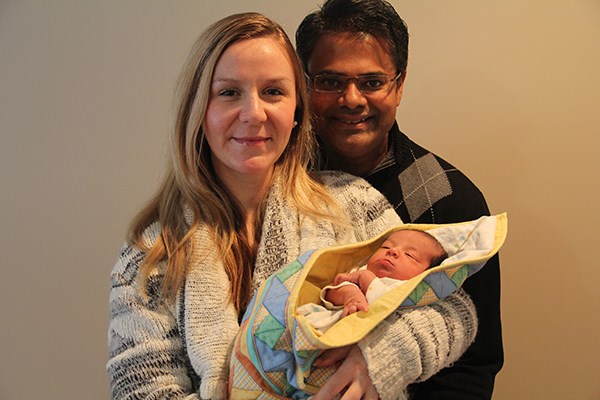It’s been nearly a year since Brackendale’s Shannon Prasad gave birth to her first child.
Baby Maya was born at home with the help of local midwives. Looking back, Prasad wouldn’t have had it any other way.
“I am incredibly happy with the midwives,” she told The Squamish Chief on Monday. “I can’t speak highly enough of them.”
Although midwifery is more accepted than it has been by previous generations, public education about the childbirth practice is still necessary, according to Alix Bacon, president of the Midwives Association of B.C.
Bacon was in Squamish late last week to meet with local midwives at the Roots Community Midwives Clinic in advance of the Canadian Association of Midwives Conference this week in Victoria.
“Really basic things we want people to know are midwives are covered by the Medical Services Plan and that they are university-trained experts in low-risks births,” she said, adding some people also still don’t know mothers can choose between a home and hospital birth attended by midwives. Pain medication options are also available with midwives, Bacon said.
It is really important for women to have choice, said Bacon, adding that informed choice is at the core of midwife care.
Another common misunderstanding is the difference between a doula and a midwife.
A doula is a trained, but non-medical supporter for the mother and family before, during and after childbirth, according to the Sea to Sky Doula website.
“A midwife is a primary care provider for maternity. They can provide all of your prenatal care. They do regular visits with you throughout pregnancy,” Bacon said. “They stay with you throughout labour… until an hour or two after birth.”
The midwife takes care of mom and baby until about six weeks postpartum.
British Columbia boasts 330 registered midwives, Bacon said.
“We are now doing 21 per cent of the births in the province,” Bacon said. B.C. has the highest rate of midwifery in Canada, she added. Across the country, babies come into the world with the help of midwives about nine per cent of the time, according to a recent report by professor Cecilia Benoit.
“It really takes that threshold of somewhere between 15 to 20 per cent to cross over into the mainstream,” Bacon said.
In Squamish, 30 per cent of the births at Squamish Hospital are by midwives, according to Bacon.
At the Roots clinic 30 to 40 per cent of their births are at home, she said, which is above the provincial average of 20 per cent for midwives.
“Here in Squamish the midwives are a little ahead of the curve,” Bacon said.
The local Roots midwives website is www.rootsmidwives.ca.




